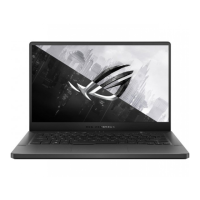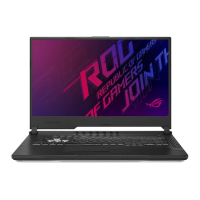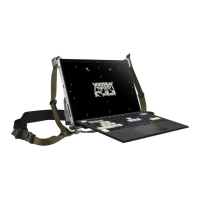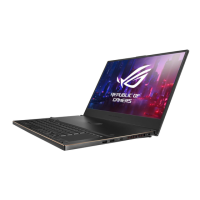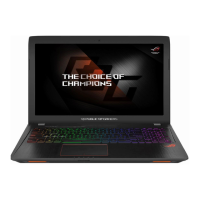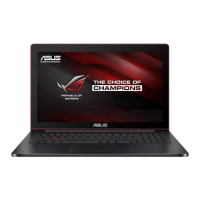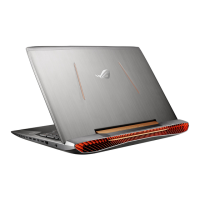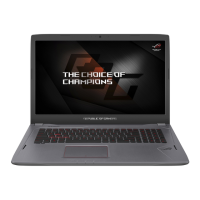Do you have a question about the Asus ROG Zephyrus G15 and is the answer not in the manual?
Detailed illustration and description of the notebook's top components.
Detailed illustration and description of the notebook's bottom components.
Detailed illustration and description of the notebook's right-side ports and slots.
Detailed illustration and description of the notebook's left-side ports and connections.
Step-by-step guide to charging the notebook's battery for initial use.
Basic operations including opening the display panel and pressing the power button.
How to move the pointer and perform single-finger gestures on the touchpad.
Explanation of two-finger gestures for scrolling, zooming, and right-clicking.
Adjusting touchpad preferences and settings via Action Center.
Explanation of various commands triggered by function keys (F1-F12).
Description of special Windows keys for Start menu and other functions.
Guide to initial Windows 10 setup and navigating the Start menu.
Managing Windows apps, Task View, and Snap feature for efficient multitasking.
Utilizing Action Center, keyboard shortcuts, and network connection methods.
Instructions for turning off the notebook and putting it into sleep mode.
Understanding POST, BIOS, and methods for accessing BIOS settings.
Procedures for recovering the system using available options and performing recovery actions.
Practical advice for maximizing notebook usage, performance, and data security.
Frequently asked questions and solutions for common hardware issues.
Frequently asked questions and solutions for common software issues.
Information on the notebook's internal modem compliance with various standards like JATE and FCC.
Statement on network compatibility for the equipment and potential inter-working difficulties.
FCC compliance statement regarding radio frequency interference and operation conditions.
Cautionary statement regarding FCC RF exposure limits and user compliance.
Innovation, Science and Economic Development Canada compliance for radio equipment.
Safety precautions related to UL standards for telecommunications and battery use.
Safety requirements for power, TV installation, copyright, and hearing protection.
Cautions regarding the handling, replacement, and disposal of lithium-ion batteries.
Approval details for the notebook's built-in modem under the CTR 21 standard.
| Processor | AMD Ryzen 9 5900HS |
|---|---|
| Graphics | NVIDIA GeForce RTX 3080 |
| Display | 15.6-inch, QHD (2560 x 1440), 165Hz |
| Battery | 90Wh |
| Operating System | Windows 10 Home |
| Wireless | Wi-Fi 6 (802.11ax), Bluetooth 5.1 |
| Storage | 1TB NVMe SSD |
| Weight | 1.9 kg (4.19 lbs) |
| Ports | HDMI 2.0b |
